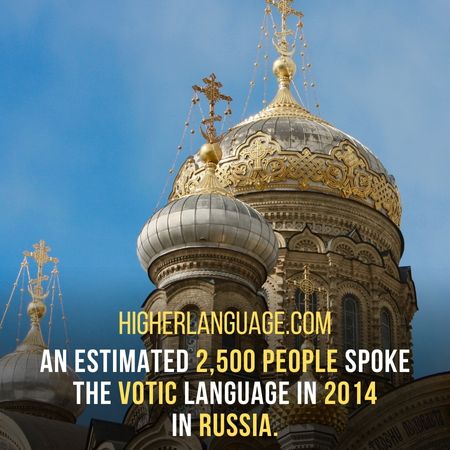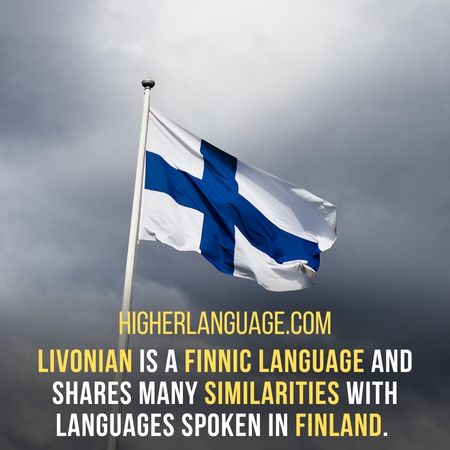Estonian is a member of the Finno-Urgic language family. And the languages similar to Estonian are a member of the same language family.
[toc]
These languages are historically connected at their roots. Let us explore that in detail.
6 Languages Similar To Estonian
Estonian is a Finnic language spoken by about 1.1 million people, most of them living in Estonia. It is closely related to Finnish and is mainly spoken in Estonia.
While it has been influenced by languages like Latin, German and Swedish, Estonian retains its own distinctive character.
Estonian is believed to have derived from languages spoken by the ancient Balts and Finns who first inhabited the region.

It belongs to the Uralic language family, including the Finnish, Hungarian, and Sami languages.
As mentioned before, Estonian has been influenced by languages like Latin, German and Swedish over time.
Other languages similar to Estonian include Finnish, Võro, and Livonian.
These languages are part of the Uralic language family and have been influenced by languages like Latin, German and Swedish at certain times.
The top 6 languages similar to Estonian are as follows:
1. Finnish:
Finnish is a member of the Uralic language family and is the most widely spoken language in Finland.
However, Swedish and German languages have strongly influenced it over time.
The Finnish language has its roots in the Uralic languages spoken by Finno-Ugric peoples in northern and eastern Europe.
The earliest written records of the languages date back to the 16th century, but it is believed that they existed long before then.
Estonian is a member of the Finno-Ugric languages, which are closely related languages spoken in Estonia and Finland.
The two languages share many similarities, making them mutually intelligible to a certain degree.
Similarities:
Both languages are agglutinative, adding suffixes to words rather than changing them. That makes them easier to learn for those familiar with languages in the same family.
Both languages use similar grammar structures, including verb conjugations and noun declensions.
For example, in Estonian, nouns are declined according to gender and number, similar to Finnish.
Both languages have similar phonology (sound system). For example, they both have long and short vowel sounds that can change the meaning of words when pronounced differently.
Both languages contain many cognates or words that are similar in both languages but have different meanings. That means that learning one language can help you understand the other.
Both languages use the Latin alphabet, though Finnish includes some additional letters.
Differences:
Finnish has a greater number of loanwords from languages such as German, Swedish, and Russian.
Estonian, on the other hand, tends to be more conservative in its use of loanwords and is known for having a “purer” form of the language.
The pronunciation of both languages differs significantly, with Finnish having a greater variety of vowel and consonant sounds.
Finnish tends to use more complex verb conjugations than Estonian, while Estonian has some additional grammatical features, such as cases.
Estonian also uses several phonetic elements not used in Finnish, including palatalization, vowel harmony, and consonant gradation.
In addition, Finnish is based on Uralic languages and uses case endings instead of word order to convey meaning.
That means sentences may be structured differently in Finnish than in Estonian.
Both languages have unique cultural influences and dialects, making them difficult for unfamiliar people.
Ultimately, both languages have unique characteristics that make them worth exploring.
2. Votic:
Votic, also known as Votian or Voteski, is a language spoken by the Vod people who live in the Karelia region of Russia.
It is a Finno-Ugric language closely related to Estonian and Finnish.
Although it has borrowed some words from Russian, its grammar and syntax have retained many similarities with other languages in the Finno-Ugric family.
The Votic language has been used since the 10th century, and its speakers were believed to be part of a larger Baltic-Finnic population.

An estimated 2,500 people spoke the Votic language in 2014.
Votic And Estonian share many features, notably their grammar and syntax similarities.
Similarities:
Both languages are members of the Finno-Ugric language family and share many common features.
Votic and Estonian languages have a similar vowel system, with six vowels.
In addition, both languages use suffixes to indicate the case of nouns and adjectives and several postpositions.
They also share some common word order patterns.
The languages have similar grammar, with both having a subject-verb-object word order.
For example, in Estonian, the phrase “ta lugeb raamatut” (she reads a book) is constructed in the same way as its Votic equivalent: “tem om kirjutand raamad“.
Both languages have similar pronunciation and phonology. Both languages use seven vowels and twenty consonants.
Additionally, they both have a similar vocabulary and some shared words.
Furthermore, both languages use the same alphabet – Latin script – to write their languages.
Finally, both languages emphasize vowel harmony, which features languages in the Finno-Ugric family often share.
Differences:
Although Estonian and Votic languages are quite similar, they have key differences.
One of the main differences is that while Estonian has retained many of its Slavic roots.
Votic has lost some of its original language elements and was heavily influenced by Finnish languages over time.
Additionally, Estonian uses a more analytical form of grammar, whereas Votic languages use more of an agglutinative form.
That means that the Estonian language has words that can be broken down into their parts to create new meanings.
On the other hand, Votic languages rely on adding suffixes to words to change their meanings.
Additionally, while both languages have adopted many loanwords from other languages.
Estonian has adopted more Germanic words, while Votic languages have incorporated more loanwords from Finnish.
While the languages have similar grammar and vocabulary, they also have certain pronunciation and sentence structure differences that make it difficult for speakers of one language to understand the other.
3. Livonian:
Livonian is a language spoken by approximately 150 people in Latvia and Estonia.
It is considered an endangered language, as speakers have been steadily declining.

Livonian is a Finnic language and shares many similarities with languages spoken in Finland.
Its grammar structure is similar to Estonian, but its vocabulary consists mostly of words from the Livs people, an ethnic group in Latvia and Estonia.
Livonian is thought to have originated around the 11th century. The Livs people, a Finnic ethnic group in Latvia and Estonia, originally spoke it.
Over time, the language began to evolve and incorporate vocabulary from languages like Latvian, German, and Swedish.
Additionally, some loanwords were taken from Russian due to its proximity and long history of contact with the area.
Today, only a handful of people speak Livonian as their first language.
Most speakers are elderly and primarily located in Latvia. However, many linguists consider it an important part of the Baltic language family due to its similarities to Estonian.
In addition, some researchers have argued that Livonian is a “transitional” language, meaning it bridges the gap between languages like Estonian and Latvian.
Similarities:
Both languages have a similar grammar structure and use the same alphabet.
They also share some vocabulary, such as “there” (hello).
Livonian has preserved more archaic features than Estonian and thus can provide valuable insight into the history and development of languages in the region.
Both languages use the same type of verbal conjugation in their verb endings.
For example, the verb endings in both languages may have an “-n” or an “-s” ending.
The languages also have similar word order rules, such as putting adverbs at the end of a sentence.
Livonian and Estonian both have an abundance of diphthongs, which are combinations of two vowel sounds within one syllable.
Grammatically, they share a similar structure and verb conjugation system. They both tend to drop certain letters or sounds in words depending on context.
Differences:
Although languages are similar to Estonian, Livonian and Estonian have some differences.
Firstly, Livonian is a minority language with fewer speakers than Estonian.
Secondly, the two languages primarily differ in their vocabularies and how they form words from root words and new expressions.
Livonian has also preserved some old Indo-European forms, which can be seen in its archaic vocabulary.
Finally, Livonian has more vocalic harmony than Estonian.
That means the languages rely much more heavily on vowel sounds to form words and create a unique sound pattern that sets them apart from other languages.
While the two languages are similar in many ways, they have some key differences that make them distinct.
Knowing and understanding the differences between languages like Estonian and Livonian can help us appreciate the beautiful diversity of languages worldwide.
It is also an important reminder that language is constantly evolving and changing, making it a fascinating subject to explore for any linguist.
4. Ingrian:
Another language related to Estonian and Livonian is Ingrian, which is spoken in parts of Russia.
Ingrian is a Uralic language brought to the area by several waves of migrants during the Middle Ages.
It is closely related to Estonian and Livonian, with some similarities in grammar and vocabulary.
While it has declined in usage over the years due to Russian assimilation policies, small pockets of speakers still keep the language alive.

The origin of the Ingrian language is unclear, as languages from all over Europe have influenced it.
It has influences from Slavic languages such as Russian and Polish, Germanic languages such as Swedish and Finnish, and even other Uralic languages like Estonian and Livonian.
The origin of the language is still debated among linguists, but it is believed to have developed in the early 1700s.
Similarities:
Although Ingrian and Estonian languages may sound very different, they have several similarities.
Firstly, both languages share a common Uralic language family, making them more closely related than languages from other families.
Secondly, some of the words used in each language have similar roots and meanings.
Thirdly, both languages share similar grammatical structures, such as case and verb conjugation rules.
Lastly, many of the languages used in Estonia have been influenced by Ingrian, such as the Livonian language.
Differences:
Despite these similarities, there are still some key differences between the two languages.
Firstly, Ingrian is considered a dialect of Finnish, whereas Estonian is its distinct language.
Secondly, Ingrian is a Finnic language, which is heavily influenced by languages like Finnish and Karelian.
Lastly, Estonian tends to use more complicated grammar structures than the simpler ones used in Ingrian.
5. Karelian:
Karelian is also a language similar to Estonian and is spoken by around 80,000 people.
However, it is considered an endangered language, as the Finnish and Russian languages, have greatly influenced it.
Karelian language is believed to have originated from the languages of ancient Uralic speakers, who migrated and spread their languages across what is now modern-day Europe.

As a result, variations of the Karelian language are spoken in Finland, Russia, and Estonia.
Karelian shares many similarities with Estonian, such as vowel harmony.
Similarities:
Both languages have similar grammatical structures.
For example, they both use suffixes and inflections to distinguish between grammatical genders, noun cases, verb tenses, and other features of the languages.
Additionally, both languages make use of vowel harmony in words.
They share many common words and phrases. Such as “there” (hello) and “aitäh” (thank you) in Estonian and Karelian languages.
In terms of pronunciation, many of the words sound similar to each other. Vowel harmony is an important part of both languages, each with its unique rules.
Finally, both languages have a strong oral tradition, including folk tales and storytelling.
Differences:
Although languages have many similarities, there are some differences between Karelian and Estonian.
The most obvious is the alphabet—Karelian uses the Cyrillic alphabet, while Estonian uses Latin script.
Karelian also has its own grammar rules, which can differ from Estonian.
Additionally, the languages have a distinct lexicon—Karelian has many loanwords from Finnish, while Estonian borrows more words from German and other languages.
Finally, Karelian is spoken in a much smaller area than Estonian and is considered an endangered language.
It’s important to remember that these languages are closely related, so speakers of one can often understand the other, even if they cannot speak it.
Knowing a bit of Estonian can go a long way when trying to learn Karelian!
6. Veps:
Veps is a Finnic language similar to Estonian and Karelian, but it has seen its unique development.
It’s most closely related to the languages spoken in southern Finland, meaning loanwords from Finnish are common.
Veps also uses Latin-based script, making it fairly easy for speakers of Estonian or Karelian to learn.

However, it is not widely spoken, with only about 6,000 native speakers.
The Veps language is a descendant of the Proto-Finnic languages.
Therefore, it has been strongly influenced by the languages spoken in southern Finland, including Finnish and Karelian.
Veps was first written down in the 16th century, but it wasn’t until much later that it started to be used for official documents and publications.
Similarities:
Both languages use the Latin alphabet. The languages have similar pronunciations, with both languages having a lot of long vowels and consonants.
They share some vocabulary, such as words for family members and numbers, and some related to nature.
As languages of the same origin, they also have similar grammatical structures.
Grammatically, the languages are very similar. For example, both employ agglutinative morphology and have quite complex grammar rules.
Both languages have five grammatical cases – nominative, genitive, partitive, inessive, and illative.
Differences:
Though the languages have many similarities, there are also some differences between Veps and Estonian.
The biggest difference is that Veps uses Cyrillic characters instead of the Latin alphabet used by Estonian.
Additionally, the languages have different pronouns. While Estonian has a separate pronoun for each case (he/she/it), Veps does not.
Finally, Veps has several additional grammatical cases that Estonian does not. Despite the differences, both languages are mutually intelligible.
Final thoughts:
All in all, languages similar to Estonian are fascinating languages that provide an interesting look into the region’s history and language.
They provide an interesting window into the past and a great way to understand languages related to Estonia.
It is also worth noting that many of these languages are endangered, so it is important to preserve them for future generations.
Knowing about languages similar to Estonian can help us appreciate their history and culture in ways we may not have otherwise known.